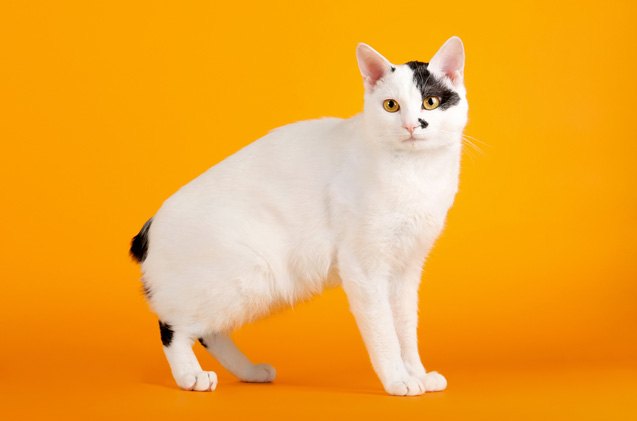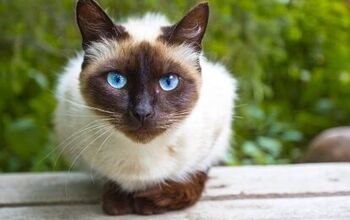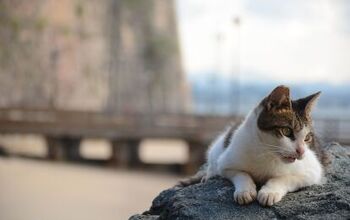Japanese Bobtail


About Japanese Bobtail
One of the oldest of all the naturally occurring breeds of cat, the Japanese Bobtail is a native of Japan and first appears in written records more than a thousand years ago. It is generally accepted that the first cats of this breed helped Buddhist monks protect their rice paper scrolls from rats. In Japan, the Bobtail is a street cat and remains a premier mouser. In 1968, Elizabeth Freret imported the first of the breed to the U.S. The short-haired version received championship status in 1976, and the long-haired variant in 1993. There is no relation to the equally short-tailed Manx.
The Japanese Bobtail is a sociable, active breed known for its excellent health.
The Japanese Bobtail is a sociable, active breed known for its excellent health. They like to be with their humans regardless of the activity at hand, sprawling on the couch to watch TV with you, holding down your newspaper, head bonking your book, and even going with you to the door to greet guests. They have a whimsical habit of carrying things in their mouths and are always up for an impromptu game of soccer or fetch. They will rocket through the house playing tag with other cats and are such good jumpers they have proven to be naturals for the relatively new Feline Agility competitions. Some Japanese Bobtails finished the regulation agility course in under 10 seconds and are ready for more.
A Japanese Bobtail’s tail is uniquely his own, and no two tails are alike. The “bunny-like” tail should be no longer than three inches, and can be curved, angled, bumpy, or any combination thereof. Because the gene for the shortened tail is dominant, it breeds true across generations. The Bobtail’s back legs are longer than the front and appear solid and muscular. Upright ears sit on a triangular head and have well-defined right angles. Oval eyes give the face a slightly Oriental cast. In body conformation, the Bobtail is a medium-sized, long cat, with a lean, sturdy quality that does not detract from his confident charm. The Bobtail has a broad vocal range, almost seeming to sing at times, and will always speak when spoken to.
Many colors are present in the Japanese Bobtail breed including solids, calico (mi-ke), van, and bi-color. Tabby, spotted, mackerel, and classic patterns are present and there is both a long and short-haired version. The fur is soft and silky. Predominantly white individuals with calico markings are especially desirable.
Japanese Bobtails with short hair have a medium length coat and no real undercoat. The longer haired variety is only marginally so, but does have a ruff on the chest. Both are easy to groom. Count on brushing and combing twice a week, with an additional session during prime shedding seasons in spring and fall. Since these cats are very fond of riding on their owners’ shoulders, it’s a good idea to keep their nails well trimmed. Bobtails tend to be good about all these maintenance chores, which makes the whole process much easier.
Photo credit: dien/Shutterstock

Amy Tokic, Editor of PetGuide.com, is a passionate animal lover and proud pet parent of Oscar, a Shih Tzu/Chihuahua cross, and Zed, a Japanese Chin. Her love of animals began in kindergarten, when she brought her stuffed dog Snoopy into class with her every day. Now, she writes about her adventures in pet ownership and tirelessly researches products, news and health related issues she can share with other animal enthusiasts. In her free time, Amy loves perusing used book and record stores, obsessing over the latest pet products available and chasing squirrels with wild abandon (a habit attributed to spending too much time with her pooches).
More by Amy Tokic

























